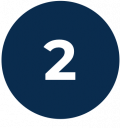Leadership
LEADERSHIP PHILOSOPHY
Enablement rather than enforcement. Bridge building rather than whip cracking. Autonomy & accountability rather than micromanagement and order taking.

Most would agree that the image of a boss yelling instructions at his team is not helpful nor effective leadership. However, I also believe that the image of the leader in the trenches at the front of their team is not the right one either. I've seen too many leaders try to demonstrate high quality work by attempting to be the team lead in addition to the manager. That mentality is the source of an incredible amount of problems, inefficiency, and turnover.
I prefer the mental model of a leader building and holding up a bridge for their team. A leader should inspire. They should set a clear vision. They should make connections for their team. They should clear obstacles. Most importantly, they should enable their team to do the best work of their lives. But the responsibility for doing the work belongs with the team, not the manager. Giving autonomy while requiring accountability is one of the hallmarks of great leaders.
I have found that it is through transparency, accountability, teamwork, and ownership that winning teams are created and maintained. I hire great people with the skills & background to solve problems, give them the tools, guidance, & training they need to succeed, and then stay out of their way. I also only hire people that have a Founder’s Mentality so that they are motivated to make decisions and achieve results through their own ingenuity. All I have to do then is point them in the right direction, clearly defining the objective and key results I want to see then allow them the flexibility to achieve that objective/results however they see fit. I set clear expectations and hold the team (and myself) to them. I expect everyone to play at the top of their game, but do not tolerate 'superstars, gurus, or rockstars'.
The best way I've found to create a culture of innovation that is scalable is to push decision making & accountability as far down the chain as possible. This creates an entire team of leaders rather than followers.
MY COMMITMENTS
I make 10 commitments to any team I work with. They embody my leadership approach and beliefs.

We’ll have a weekly 1:1. I’ll prioritize these meetings and will never move them except on rare occasions. If you have an urgent need I can help with, please reach out. I’m here to help. Your success & well-being are my top priorities.

Topics for 1:1s will be in the meeting invite so we remember important topics, but you’re always free to use the time for whatever is on your mind. This is your time. If nothing more urgent comes up, we will spend our time together doing the following:
- Discuss progress toward goals
- Give and receive feedback (2-way)
- Talk about career growth & life goals
- Connect work to the larger mission, goals, & strategy of the company
- Personal connection

Your work gets done your way. My focus is on outcomes, not output. Once we’re clear on where we need to go, how to get there is up to you. If I ever find it necessary to suggest a specific approach, I will supply an example and explain the reason why.

I do not need to approve designs. I will give feedback, coach, & guide when appropriate, but I trust you and your partners to make decisions that are in the best interest of both the company and our associates. You are the ones that have the best information.

I value openness, transparency, and candor. I will both provide and seek feedback on a regular basis. You’ll get feedback from me when it is fresh. There will be no feedback in your performance review that you’re hearing about for the first time.

I will always welcome your thoughts, listen patiently, seek to understand first, and will never respond defensively.

I trust you to manage your own time. You don’t need to clear breaks or OOO time with me or provide justification. We all are humans first and employees second. Taking care of yourself, your family, and those close to you takes first priority.

I trust you to skip level and talk to my manager or other senior management about anything you feel is relevant at any time. You don’t need to clear it with me, and I’m not going to get weird about it if you do choose to tell me about the conversation.

I will attribute credit appropriately to you and your team. I will never exaggerate my own role or minimize your contribution. I’ll be especially certain to nail down attribution when senior management are hearing of our accomplishments.

I will invest in you and focus on helping you achieve your career goals. Work assignments will be mutually beneficial, and we will follow up on progress on a regular cadence.
MY ASKS
In exchange, I have 10 asks of each team member in order for us to create an enabling & autonomous team culture:

I want to hear your feedback, to know when you think I’m wrong, and to understand your ideas for how we (and I) can do better.

A balanced team is strongest when it’s collaborating & working together. I ask that we normalize presenting in-progress work for feedback and involve others (especially partners) early and often. How you involve them or bring them in is up to you.

A team achieves the best results when we seek to understand, learn, and value each other. I ask that we make a conscious effort view one another as people with wants/needs/desires as valid as our own, to seek to understand each other, and take care of each other.
Please look around you to see who you can help, who you can understand better, and speak up when you need help. We’re all in this together.

The best experiences are delivered—and the best partner relationships are forged—when we explore multiple directions rather than running with the first idea we have.
When presenting ideas, always show multiple options unless there is a clear business justification otherwise. (These situations should be the exception rather than the rule).

Always be learning. Never lose the desire to experiment with new methods, try a new way of working, challenge assumptions, and speak up when you have a question.

Learn to recognize similarity & confirmation bias. Include people, workflows, & circumstances in your research, iterations, & solutions that are different from how you experience the world. Accessibility, Equity, & Inclusion should be a mentality not a step in the process.

Empathize with, and seek to understand, partners just as much as you do with users. Understand what motivates them, what keeps them up at night, and how you can help.

Prioritize heads down work. I am completely supportive of blocking off time each week for heads down work. Uninterrupted time to think is vital to delivering great experiences.

Define & stick to non-negotiables (whatever that means to you). Set limits to which you are unwilling to make exceptions and stick with them. This helps promote mental health and avoid burnout.

Don’t leave business impact up to partners. We should all feel just as much accountability for impacting and growing the business as anyone we partner with. Learn how to pitch a business case for potential growth areas.
MENTORING STRATEGY
Coaching and mentoring is a vital part of any design leader's job. I mentor designers by learning, listening, collaborating, and teaching.

LEARN TOGETHER
Experiencing great design together helps team members recognize the standard we're striving for and get inspriration for their work. It also helps us learn from each other. One of the ways I have helped establish a culture of learning is to schedule regular opportunities away from our day-to-day to experience great design together. Experiencing great design, finding inspiration, and flexing our creative muscles outside of our normal routine builds team unity and helps us all to keep our creativity fresh. Some examples include:
- Creative pitch exercises
- Learning a new creative skill like offset printing or underwater ink photography
- Find a new app that is designed well and critique it together
- Creative inspiration field trips (to a different creative environment than digital design)

LISTEN
It is also vital to give team members a chance to speak their mind and have open and honest conversations with each person individually as well as the team together. I meet regularly with both the team and individuals. I've found a lot of value in doing theme-based 1:1s where during a given week I ask every team member questions around a particular topic in their 1:1s. Topics include things like:
- Career development (Tour of Duty progress)
- Personal growth
- Process
- Product Vision
- Relationships with cross-functional team members
- Skillset
- Strengths/Weaknesses of the team
- Etc

COLLABORATE
In addition to 1:1s, I have found it vital to collaborate or pair design with each team member. This is where I join them in their regular day-to-day design activities for a couple hours. We put our heads together to solve a problem they are facing. This gives me an opportunity to see how they like to work as well as allowing me an opportunity to help raise the bar for quality and keep my own skills sharp.
I've found that these pair design sessions also help me keep visibility into progress that is being made and what issues the team is facing while also helping be a part of the solution. These sessions are where I take off my boss hat, and put on my senior designer hat. I try to pair design with each team member once a week.

TEACH
The last way I mentor team members is through formal teaching opportunities. This doesn't necessarily mean I'm always the one doing the teaching, but it is an opportunity for us to learn in a more formal setting. One of my favorite ways to do this is through holding a weekly UX Book Club. We select a book to read together and on a regular interval we get together to discuss a chapter of the book, what we learned, and how we can apply it to our work.
Another favorite method is having a team member teach a new user research or brainstorming facilitation technique and guide us through practicing it. Each team member is then encouraged to use that technique in their work during the next month (as appropriate).
4 LEADERSHIP PILLARS
I use 4 pillars of people-first leadership to create a culture of openness, trust, and respect.
Without any 1 of these, a good design culture tends to fall apart, effectiveness decreases, and employee dissatisfaction/attrition grows. With these pillars as a solid foundation, innovation thrives, employees grow, and revenue multiplies.

I CARE PERSONALLY
Leadership is about enabling team members to do their best work. I care personally about my coworkers and direct reports. I get to know who they are, what they value, what their career goals are. I value and help them grow their own creative process. I help them identify the inputs they need to be successful. Above all I view team members and coworkers as people with wants/needs as valid as my own, not as objects. I take the time to get to know those I work with. There are 4 specific areas I focus on understanding about those I work with:
Whole Self
People bring their whole selves to work. Trying to suppress personal struggles while at work not only is impossible, but trying to do so can lead to mental health issues. How can I effectively help, motivate, and provide "air cover" for team members that I don't really know? By getting to know who team member's are (both inside and outside of work), what they value, what they struggle with, what their hopes & desires are, I am able to help them achieve results more effectively. It also humanizes them for me and helps me always see them as people, and avoid the need for justification and the temptation to micromanage. In short it increases trust and helps me be a more effective 'servant leader'.
Career Goals
Most companies have a 1-sided view of employee development. A manager delivers what the employee needs to work on at an annual review. Success, promotions, bonuses, etc are determined by goals set by the company. If the employee has any say at all it usually is within the confines of what the company needs from that employee. This results in employee dissatisfaction, burnout, and churn. I seek to understand and take into account what the career goals of the employee are. This enables me to find a match in job assignment, role, and project at the intersection of company needs and employee goals. How can I truly mentor and coach someone who I don't even understand what "success" or "next step" means for them?
Unique Creative Process
I seek to understand, appreciate, and help grow their own creative process. One of the simultaneously fantastic and challenging aspects of UX Design is that while there are general design best practices there is no single "correct" way to design experiences or solve problems. Because of this, coaching team members on the way I would solve a problem often doesn't help. I get to know the way they approach design and then mentor them on developing that approach further.
Inputs Needed for Creative Process
Many designers express frustration around their circumstances (running into executive or stakeholder interference for example) without really taking the time to understand what inputs they need to be successful. For example, they might need to be delivered a problem to solve rather than a solution to implement, down time to grapple with an idea heads-down, a culture of collaboration, a design/research mentor to bounce ideas off of, or flexibility to work some days from home, etc. Many designers haven't ever thought of success in these terms. It also can vary quite a bit from designer to designer. By helping team members identify the inputs they need, I am more effectively able to help them achieve success.

I GIVE TRUST & AUTONOMY
I assign team members problems to solve rather than solutions to implement. I trust my team to achieve the results they were hire to achieved. How they achieve them is up to them. There is nothing that destroys a culture of innovation like stepping in all the time telling people how to do their jobs. I hold teams accountable for the success metrics & milestones they set, but give them the autonomy to experiment, research, and learn from customers. I do this in 3 specific ways:
Tours of Duty
I work with team members to agree on personalized, mutually-beneficial, "missions" for them to achieve. These take goals and benefits to both employer and employee into account. They have defined scope (outcomes), projected milestones, and a planned end. This allows the employment relationship to be more clear, 2-sided, and greatly improves trust between company and employee.
Air Cover Leadership
I provide "air cover" rather than "swoop and poop" leadership. This means that I'm close enough to understand and anticipate problems my team might face and eliminate obstacles they face, but not too close where I might get in their way. Practically, this means that I spend the majority of my time with my team helping to identify questions problems to solve that may not have occured to them, rather than telling them exactly how to solve those problems.
Trust is given then lost, rather than witheld then earned
At most companies you have to earn trust over time. It's almost like a "guilty until proven innocent" mentality. This erodes trust and delays the ability to achieve results (especially innovative ones). Instead, I trust those I hire explicitly unless they prove themselves unworthy of that trust. I firmly subscribe to the thought that we hire smart people so they can tell us what to do. Trust is an essential component of that.

I USE PRINCIPLES-BASED MENTORING
Because design approach and experience level can very extensively, the best way I've found to coach & mentor team members effectively is to take a principles-based approach. Together with the team I create an operating agreement or Design Ethos that contains creative standards we will all hold ourselves accountable for, attitudes that will and won't be acceptable as we solve problems together, and general committments for how we will work together. I have used this approach with design teams as well as cross-functional agile teams. It allows us to all be on the same page and scales well as UX Maturity increases and the design practice grows.
Standards for the Creative Work
These are universal standards we all will hold ourselves accountable for. Since the team helps to set/refine these standards, they are bought into them and my job just becomes helping to provide feedback on how each employee & team are measuring up.
For example, one of the standards my teams have had in the past is "We explore multiple ideas before running with any single one". When I observe a mid-level designer's prototype as nearly identical to his/her initial sketches I'll ask what other ideas they considered. If they didn't consider more than one, I'll seek to understand why. Maybe they just got excited and forgot (which would result in goal setting for exploring more ideas in the future). But maybe, it's because their PM was insisting the devs needed to start implementation ASAP and the designer didn't have time to explore more than one idea. If that continues to happen, there's an opportunity there for me to have a conversation with the PM and DEV leadership to try to find a way to incorporate sufficient time for design into estimates.
Some other standards we've set in the past have included:
Build stakeboards, not car frames
- Experience great design
Experiments, not debates lead to successful products
- Provide context-aware solutions
- Sharpen the saw
- Success = improved outcomes, not increased outputs
Attitudes of the Team as We Work Together
Teamwork is vital to any successful team culture. I help teams identify the attitudes they prioritize as they work together. This provides a valuable springboard for coaching, and because the team agreed upon it together, they are invested & committed in hold themselves to the standard.
Attitudes teams have chosen in the past include:
- Design is a team sport
- Embrace the "founder mindset"
- Everything is my job
- I am not the user
- Respectful & confident, not delicate
How We Commit to Work Together
In addition to Creative Standards and Attitudes, there are other commitments that are important. These can be practical like retrospectives, how the team will hold itself accountable for progress, design reviews, etc. What the commitments actually are is not as important than getting on the same page and making it visible for everyone to see. Commitments are flexible and can be altered if needed. Examples of these commitments include:
- We will share in-progress work for feedback every week.
- Let everyone speak their mind, no one will dominate the conversation.
- X number of customer exposure hours per designer.
- All user research sessions will have cross-functional representation or will be rescheduled.
- Will respond to developer Design QA requests within 24 hours
- Etc.

Image Credit to https://www.radicalcandor.com/our-approach/
I PROMOTE A CULTURE OF 'RADICAL CANDOR'
I Challenge and Praise Directly
Skirting around issues, or failing to challenge & praise directly can hamper growth and is a way that many leaders fail to care about people as people (instead of viewing them as objects). Kim Clark calls this "Ruinous Empathy". I firmly believe that being candid is a way of caring about people. There is no leadership without the 'or else'. When correction needs to be made, I am clear and provide details on A) What needs to happen, B) By when, and C) What the consequence will be if progress is not achieved by the desired date.
I also praise directly. Generic "good job" praise is often worse than no praise at all. I praise directly, specifically, in a timely manner, and in the way that resonates most with individual team members. (Not everyone appreciates praise in front of others). I also cater praise to the level of the employee. Most of all I look for opportunities to "find someone doing something right" rather than the other way around.
I Invite Others to Challenge and Praise me Directly
Candor is a 2-way street. In order to be effective, the entire team has to be comfortable being candid with each other--and me. I actively seek candid feedback from direct reports on how I'm helping and how making things more difficult. By being vulnerable and actively applying the feedback I receive, I invite others to become comfortable receiving candid feedback as well. This culture of candor makes all the difference in achieving incredible results.
I View People as People, not Objects
I've already mentioned this, but it bears re-emphasizing. Viewing those around me as people with hopes, needs, and pain points as valid as my own is ESSENTIAL to creating a culture where innovation can thrive and results can be achieved. When we ignore feelings to help others or view their needs as secondary, we seek justification for our own misguided ways of being and invite others to do the same. This places the need for justification above everything else, and destroys results.
My #1 goal as a leader is to always keep others' humanity in view so, when correction does have to be made, I do it in a people-centric way. This invites change in a positive way and maintains the positive work culture of candor we all want. This is one reason why so many employees have reported improved relationships with their coworkers during the COVID-19 work-from-home quarantines. We tend to see interuptions by kids, pets, etc which makes it easier to relate to them as people.